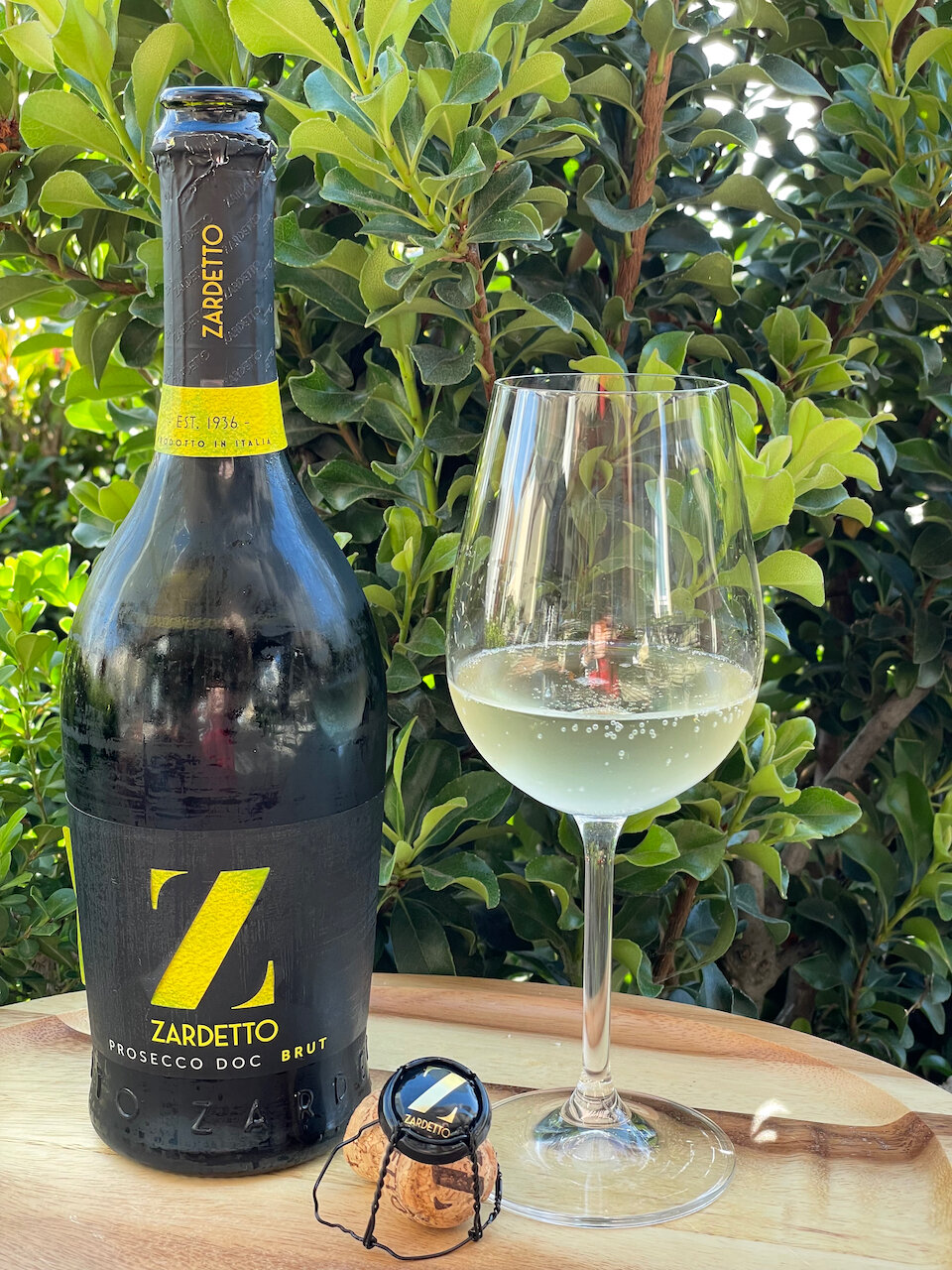Zardetto Prosecco Brut NV ($17)
This tasty Zardetto Prosecco comes from vineyards in the hilly part of the Veneto region of Italy.
It’s produced from at least 85% Glera grapes with the addition of up to 15% Pinot Bianco/Chardonnay.
The first fermentation takes place after a brief maceration (the technique of cold-soaking un-fermented grape juice in the crushed skins, seeds and stalks of the grape). The second fermentation, done to create the bubbles, takes place in large temperature controlled stainless steel containers.
Lemon-yellow in color with bubbles that form a hearty white froth in the glass. The aromas include white flowers, apricot and herbs. On the palate this Prosecco has citrus, orange blossoms and stone fruits, a very light hint of sweetness, with light notes lingering on the finish. It comes in at 11% alcohol and, with 12 g/L residual sugar, it’s at the high end of a ‘Brut.’
This is a very nice Prosecco that’s also a great value and is widely available. It’s perfect for any celebration and goes with most any foods. Cheers!
Disclosure of Wine Sample Submission: I received this sample at no cost for review. The opinions expressed are entirely my own.
Imported by Winebow Imports
Sample Provided by Jarvis Communications



